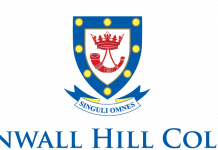In walks another teenage boy with undiagnosed Osgood-Schlatter disease. It is winter preseason and second term sports are about to kick off. We have had a high number of adolescents presenting with anterior knee pain walking through the door. Why is this increasingly becoming an issue?
Read more to hear how BASA explains this specific knee issue.
Osgood-Schlatter disease (OSD) is a non-traumatic, orthopaedic repetitive strain injury of the knee. It is most commonly diagnosed in young adolescents, particularly those that have recently gone through major growth spurts. It is also associated with performance sports that incorporate a high volume of quick acceleration, explosive movement, and rapid directional change. It is thus not surprising that winter school sports like rugby, netball, and hockey are often disciplines that end up with a few cases each season. It does, however, seem like the incident rates have been on the rise in the last few years. Understanding why this is requires analysing the causation and affected population carefully.
From a diagnosis perspective, OSD is identified by a sharp pain localised to the patella tendon insertion site on the tibial tuberosity. It is also often accompanied by a bony protrusion that is tender upon palpation. OSD tends to be unilateral, but in severe cases can affect both limbs. Pain at this site is aggravated mostly with activity and is often asymptomatic at rest. Walking, running, climbing stairs, squatting, and jumping-type movements tend to be particularly aggravating.
From a physiological perspective, the repetitive and forceful pull of the patella tendon on the tibial growth plate triggers a painful, and often inflammatory, response of both the patella tendon and the growth plate itself. Resulting in localised pain with pressure and joint loading.
Our most affected populations are young adolescents between the ages of 10 and 15. In a 2022 retrospective cohort study, Leeuwen et al. report incidence rates at 3.8/1000 individuals, with boys having significantly higher incident rates than girls, 4.9 vs 2.7/1000 respectively. They further identified peak incidence rates at 12 years of age and highlight that diagnosed females tend to be younger than their male counterparts.
Why is it that this age group has a much higher incidence rate? During this phase of adolescence physical growth occurs. Boys are particularly prone to major growth spurts during early puberty. These physiological and structural changes happen very drastically and can be immensely stressful on the joints. This phenomenon puts adolescents at a higher risk of developing repetitive strain injuries than their adult counterparts. OSD is a prime example.
There are two physiological stresses of this nature that increase the risk of developing OSD that we will discuss in more detail.
Firstly, bone growth happens at a much more rapid rate than the rest of the musculoskeletal elements. This results in ligaments, tendons, and muscles that have not proportionately kept up with our structural frame expansion. We thus end up with guide ropes (the tendons) that are too stiff, too short and too weak to effectively manipulate our now larger and longer structural scaffolding (the bones). Consequently, our tendons and their respective bony attachment points are under significantly higher stress and more susceptible to physiological damage.
Our second aforementioned physiological stress is due to the composition of the bony attachment site. The patella tendon affixes to the tibial bone at a site referred to as the tibial tuberosity. In adolescents this site is a growth plate- a cartilaginous tissue at the end of long bone that allow the bone to continue growing. In later development this growth plate will fuse and become more bone-like in composition. As cartilage is structurally much weaker than bone, we effectively have a much weaker attachment point in young adults. Using our previous analogy, the scaffolding to which the guide-rope attaches is now more susceptible to irritation, inflammation and degeneration when exposed to repetitive loading.
Understanding the aetiology of the condition and identifying susceptible individuals is an important part of managing the condition. A good understanding of the controllable factors that increase the risk of developing OSD is also imperative. Overtraining, poor movement patterns, repetitive overuse of a particular joint, inadequate strength, and inappropriate conditioning for the demands of the chosen sport are known contributing risk factors. Correction and or modification of these factors allows us to reduce the likelihood of developing the condition and will also allow for appropriate rehabilitation and management in individuals who are already presenting with symptoms.
In terms of prognosis, scientific literature shows us that rehabilitation is highly successful if addressed soon enough. Appropriate load modification, inflammation management and then specific phasic rehabilitation leading up to return to sport is highly effective. This type of intervention significantly reduces short-term consequences, such as the severity of symptoms, and time away from play. It also reduces the risk of long-term consequences such as chronic reoccurrence of the condition, and detrimental progression to more severe conditions. More severe conditions can present as fractures, bony spur formation, recurring tendinopathies, and tendon calcification. Some of which may not allow for the return to play.
So, how do we manage conditions like this? Utilisation of rehabilitation specialists to plan specific preventative conditioning, monitor training execution and screen for risk factors can allow for early detection, and reduce the risk of development of such conditions. Additionally, the prognosis of individuals with established OSD is far better as their injuries are more likely to be appropriately managed, allowing players to return to sport more with better outcomes.
While this sounds positive, we are faced with the contentious issue of privilege, as the average school or club is not able to offer such services. The responsibility to screen and manage injuries is crucial, without a healthcare professional on board, identification and prevention ends up on the shoulders of the coaches and parents, or it ends up being overlooked completely.
Our most effective tool to combat easily managed conditions from being either missed or dismissed is education. Scholars, parents, coaches, and others involved in team management need to be made aware of conditions that are likely to develop within the specific age groups and the sports codes that they are involved in.
Biokineticists should be getting more involved from this perspective, particularly in developing adolescent populations. Training of coaches should involve education around the controllable risk factors discussed earlier. Coaches should be taught to monitor individual training load, with particular attention being made to children involved in multiple sport disciplines. Optimal recovery should also be prioritized, alongside overtraining prevention.
Other pivotal conversations that need to be had, particularly in the case of OSD, should be around body awareness, cuing proper movement patterns, and developing strength and conditioning programmes that are sport-specific. Adjustments of training plans in line with some of these issues could significantly help reduce injury rates.
Of late, it seems like some of these controllable factors are being ignored. Perhaps this is responsible for the increase in numbers of OSD cases we are currently seeing in practice. We are now three years post the Covid-19 pandemic, and there is an urgency to get back to normality, this need is very apparent in school sport. Children are being pushed hard by coaches and parents, and in some cases, even themselves, to make up for lost time.
Whilst a drastic return to “normal” may appear to be our best way forward, a concerning ignorance and or disregard of fundamental concepts around athlete wellness appear to have established in our haste to get back to play. Overlooked examples include basic movement pattern skill development, overtraining management and progression in sports conditioning.
In the last month alone, I have had 2 young rugby scholars with recently diagnosed OSD that have been told to “just pull your socks up and get on with it, the injury can’t be that bad if it only hurts when you run or jump.” Health care professional alarm bells activated. The urgency to produce good players, from both a psychological and time perspective, has resulted in young adolescents that haven’t quite mastered basics being accelerated through their developmental training programmes. This is particularly concerning for current junior players, who spent almost two fundamental years of their sporting career prep at home during pandemic restrictions. Those missed sporting seasons were crucial to develop the necessary technical skills and to stimulate the body conditioning required for more advanced levels.
So, what is the moral of the story? Parents, coaches and others involved in athlete management need to seriously consider the impact that Covid-19 has had on the physical maturation and preparedness of sport-playing scholars. Adjustments need to be made and training schedules need to be carefully re-evaluated. As healthcare professionals, be on the lookout for classic repetitive strain injury presentation and get going with effective management as early as possible. Additionally, as rehabilitation specialists instead of getting frustrated with ill-advised or belligerent coaches and parents, more efforts need to be made to educate all those involved with young adolescent athletes. Collaboration after all, is in the best interest of the patient and we really should be using our skills to bring light to such issues to allow the next respective juniors to make it to their first teams without developing easily rehabilitated conditions such as Osgood- Schlatter’s disease.
Article compiled by Samantha Knobel : on behalf of BASA





